
 |
| From Brooke Beyond's blog post titled Sierra Chincua Monarch Butterfly Sanctuary: how to see millions of migrating butterflies in Mexico |
Above, Monarch butterflies are seen at the Sierra Chincua butterfly sanctuary in Angangeo, Michoacan state, Mexico December 3, 2022. Photo: REUTERS/Raquel Cunha
Above, A park ranger holds a male monarch butterfly at the Sierra Chincua butterfly sanctuary in Angangeo, Michoacan state, Mexico December 3, 2022. Photo: REUTERS/Raquel Cunha
Above, Monarch butterflies rest on the ground at the Sierra Chincua butterfly sanctuary in Angangeo, Michoacan state, Mexico December 3, 2022. Photo: REUTERS/Raquel Cunha
If you cannot go to Mexico to see the Monarchs in person the next best way to help save this species is to eliminate pesticides from your life, and then donate to one of these organizations dedicated to saving the monarchs.
UNESCO World Heritage Convention
In Florida plant Milkweed to support monarchs:
Milkweed
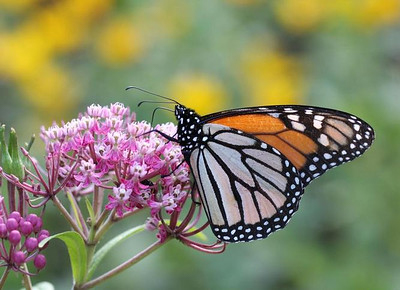
Milkweed is the only host plant the monarch butterfly (Danaus plexippus) can use to complete its lifecycle. Credit: Steven Katovich, Bugwood.org
Milkweed is the poster plant for pollinator gardens. Not only is it attractive, it's an important nectar source for bees and other insects. Milkweed is also well known for attracting butterflies and serving as a host plant for their caterpillars.
Perhaps most famously, milkweed species serve as the host plant for the monarch butterfly. Milkweeds in the genus Asclepias provide the only plant material monarch caterpillars can eat. And this popular plant hosts many more besides monarchs. Queen and soldier butterflies rely on the leaves to feed their young, too.
The Sunshine State is home to more than twenty species of milkweed, almost all of which are native. A couple of these species, in fact, are endemic, meaning they're found only in our state.
Two milkweed species are commonly offered for sale as "butterfly garden plants." One, Asclepias tuberosa, is native to Florida. The other, Asclepias curassavica, is non-native. Which should you choose for your garden? Read on for more information about native and non-native milkweeds.
Native Milkweeds

Butterfly weed, Asclepias tuberosa, is attractive, available, and native to Florida. Credit: Ansel Oommen, Bugwood.org
Unless you visit a nursery that specializes in native plants, you are unlikely to find more than one native milkweed species for sale. Still, we think the rewards make these species worth the search. Adding these natives will make your landscape a refuge for Florida's flora and fauna.
Butterfly weed, Asclepias tuberosa, is one of the most available and popular native species of milkweed. It sports attractive, bright blooms and is very hardy. For these reasons it is frequently stocked in nurseries around the state. Butterfly weed grows as a perennial in USDA Hardiness zones 3-10a. From late summer through early fall it produces orange or yellow flowers. A. tuberosa's vibrant colors make it attractive to a number of pollinators.
Other native milkweeds are available as well. A list is provided at the bottom of this article, taken from the Atlas of Florida Plants. You may have to seek them out in nurseries that specialize in natives or butterfly gardens. But for a pollinator-friendly garden, we think it's worth the effort.
Non-native Milkweed
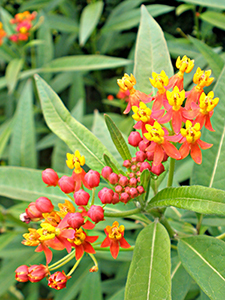
Tropical milkweed (Asclepias curassavica) is beautiful, but not native to Florida. Credit: Ansel Oommen, Bugwood.org
In many nurseries, the most readily available species of milkweed happens is a popular but non-native one. Tropical milkweed (Asclepias curassavica) is a showstopper. It produces bunches of orange, yellow, and red tubular blooms for months. The colorful flowers earned it the name bloodflower and scarlet milkweed commercially. Sometimes it is labeled "butterfly weed" or simply "milkweed." Check the label for the scientific name to avoid confusing this plant with a native milkweed species.
Recent research has scientists divided over tropical milkweed's value to monarch preservation. Its year-round growth may encourage monarchs to overwinter instead of following their normal migration pattern. Some studies suggest that overwintering puts monarch populations at a higher risk for certain diseases. Tropical milkweed also has a higher concentration of cardenolides, which may affect monarchs in the caterpillar stage of their life cycle.
On the other hand, some scientists are in favor of tropical milkweed. They point out that the most pressing threat to monarchs is extreme habitat loss. Tropical milkweed's popularity as a landscape plant may help the monarchs regain territory.
Another non-native milkweed is giant milkweed, also known as crown flower (Calotropis giganteana). It is native to Asia and tropical Africa. Giant milkweed makes an excellent specimen plant in Florida-Friendly landscapes between USDA Hardiness Zones 9-11. As its name suggests, mature plants are quite large, up to 15 feet tall and wide. For this reason we suggest adding it to the back layer in a pollinator garden.

Giant milkweed.
Like all milkweeds, the giant milkweed has milky sap and is a larval host plant for butterflies. The large purple or white flowers are pollinated by bees and butterflies and are used in making Hawaiian lei. Giant milkweed is a hardy plant and can tolerate the hot sun and sandy soil in Florida. It is also drought tolerant and has few pest or disease problems. You can learn more about giant milkweed in this article by UF/IFAS Orange County Extension agent, Tia Silvasy.
Asclepias curassavica and Calotropis giganteana are not currently considered an invasive species in Florida. The assessment does suggest "caution — manage to prevent escape" for growers in South Florida. Tropical milkweed's status will be reassessed periodically. More information about this non-native is available through the UF/IFAS Assessment of Non-Native Plants. Calotropis gigantean is not listed in the assessment at present.
Planting and Care
Most milkweeds prefer full sun. They tolerate a wide variety of soil conditions, from clay to sand. Many Florida species used in the landscape prefer dry, sandy soil and are moderately drought tolerant.
Milkweeds generally grow quickly, reaching a final height of one to four feet tall, depending on the species. You can plant them closely, about 18-24 inches apart. And whether or not the milkweed is being installed as part of a butterfly garden, plant multiple plants. Too few and you will be left with leafless milkweed and hungry caterpillars! Planting multiple species can also increase the attractiveness to butterflies and other pollinators.
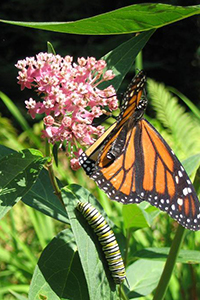
An adult monarch and a monarch larva (caterpillar), both feeding on milkweed. Credit: Rob Routledge, Sault College, Bugwood.org
As a host plant for a number of pollinators, use of pesticides on milkweed is discouraged. As a result, expect some aesthetic damage throughout the growing season. Install milkweed behind ground covers or mounding plants to hide the stems but show off the blooms. Monarch caterpillars can consume a plant's leaves quickly, but do not usually damage the plant long-term. Aphids can also cause damage. Keep these in check with a blast of water from the hose instead of applying pesticides.
Milkweeds get their common name from the milky sap they exude. This sap can irritate skin and is toxic if consumed in large quantities. Keep pets and small children away.
For more information about milkweed and other pollinator species, contact your county Extension office.
Milkweed Species Native to Florida
- Asclepias amplexicaulis - clasping milkweed
- Asclepias cinerea - Carolina milkweed
- Asclepias connivens - largeflower milkweed
- Asclepias curtissii - Curtiss' milkweed
- Asclepias feayi - Florida milkweed
- Asclepias humistrata - pinewoods milkweed
- Asclepias incarnata - swamp milkweed
- Asclepias lanceolata - fewflower milkweed
- Asclepias michauxii - Michaux's milkweed
- Asclepias obovata - pineland milkweed
- Asclepias pedicellata - savannah milkweed
- Asclepias perennis - swamp milkweed
- Asclepias rubra - red milkweed
- Asclepias tomentosa - velvetleaf milkweed
- Asclepias tuberosa - butterflyweed; butterfly milkweed
- Asclepias variegata - redring milkweed
- Asclepias verticillata - whorled milkweed
- Asclepias viridiflora - green milkweed
- Asclepias viridis - green antelopehorn
- Asclepias viridula - southern milkweed; green milkweed
Parts of this blogpost were paraphrased from reporting from SIERRA CHINCUA, Mexico, Dec 4 (Reuters) - by Brendan O'Boyle and Alberto Fajardo; Writing by Brendan O'Boyle; Editing by William Mallard, Reuters, December 4, 2022. See Brendan O'Boyle for original article.
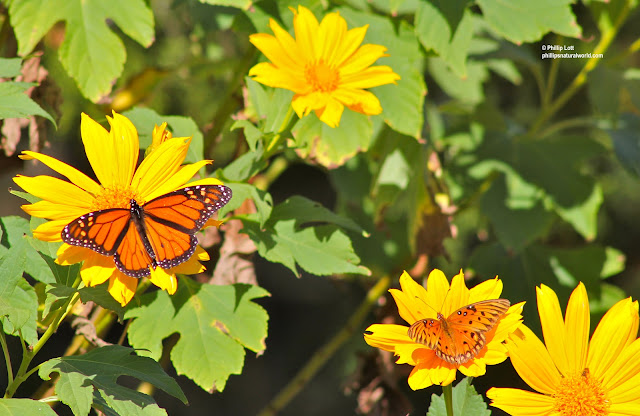

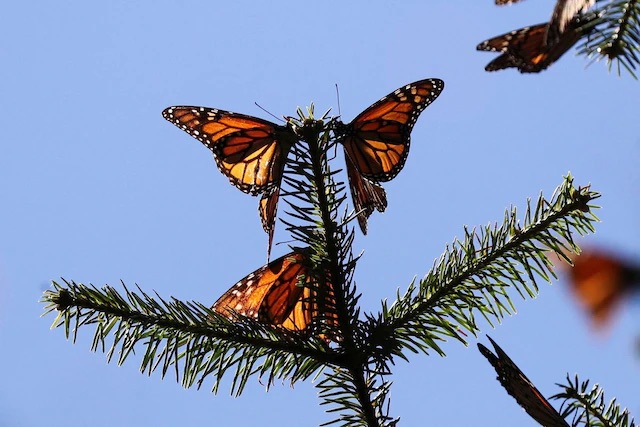










No comments:
Post a Comment